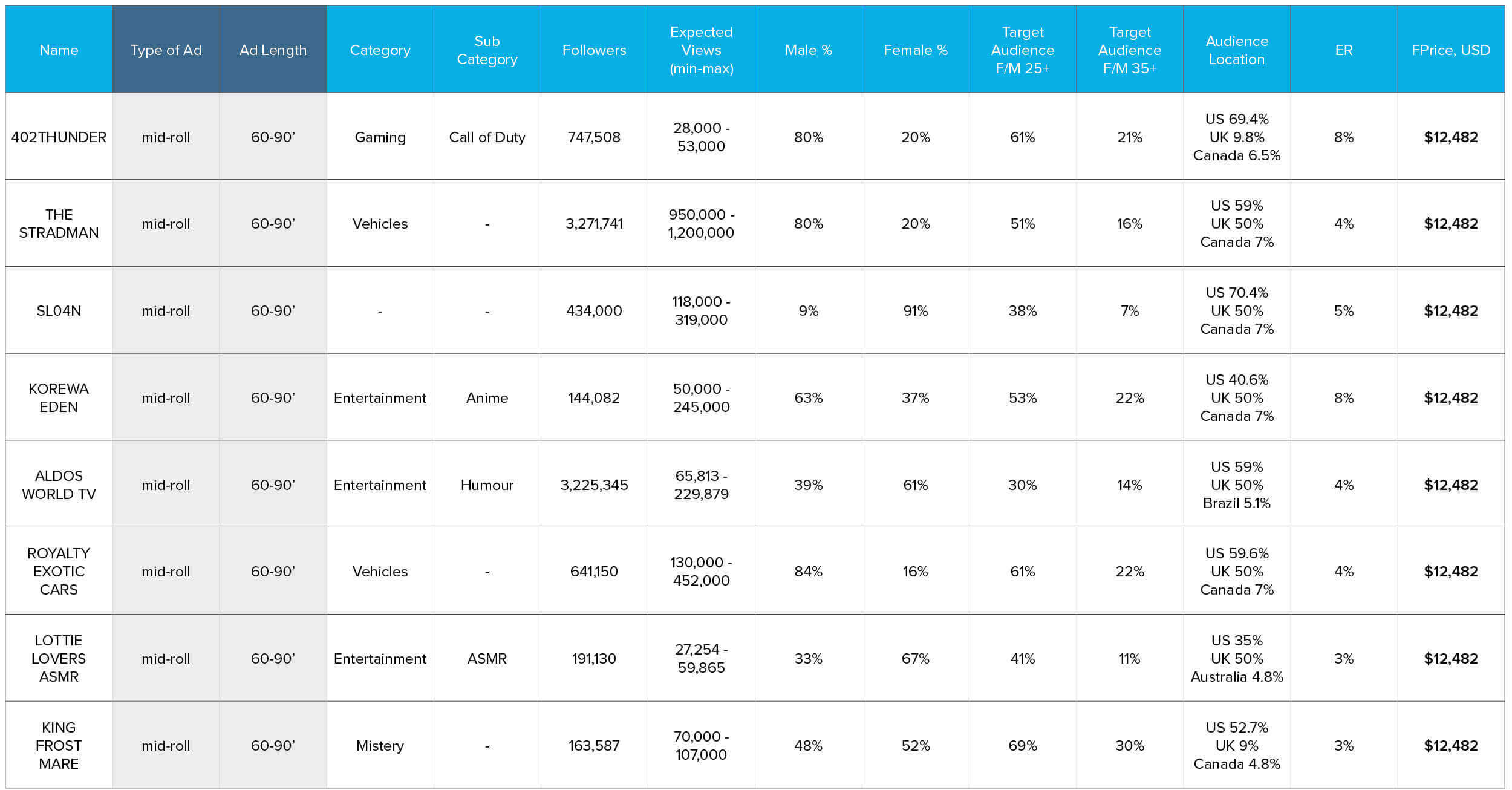
Part 1: Mastering YouTube Influencer Marketing for Mobile Apps
Alexander Ruban is User Acquisition Lead at Product Madness, a mover and shaker in social casino apps. Alexander started his UA career at popular mobile gaming companies like Pixonic and Wargaming. He became a team lead who worked in ad networks, influencer marketing and ad tech projects. Currently, Alexander leads a team at Product Madness that covers programmatic advertising, influencer marketing, App Store Optimization (ASO) and Apple Search Ads (ASA).
Learn more about Mobile Hero Alexander.
This is the first part of a two-part blog series where I share how influencer marketing can help app marketers reach new audiences, essential questions to ask when working with an agency, and the initial steps to building a media plan. Read part two here.
What Is Influencer Marketing From a Mobile UA Perspective?
There are different definitions of what influencer marketing is. However, I found this as the closest definition to the topic:
At its core, influencer marketing is the process of using external content creators, or influencers, to advocate and engage with your brand’s message. (Source: GetCarro)
Despite being a well-developed form of online advertising, not many companies on the market have mastered influencer marketing. In most cases, an influencer campaign does two things: Branding and Performance. However, it is up to you to choose the focus and make it more “performance” rather than “branding.”
| Performance Campaign | Brand Awareness Campaign |
|---|---|
| Goal: achieve business ROI targets. You need to track each new app install and analyze user behavior to understand the result of the campaign. |
Goal: varying objectives and KPIs. For example, campaign goals might not earn money but communicate your brand values to the audience to increase loyalty. |
For the blog’s sake, think of influencer marketing as a performance campaign, as a user acquisition channel for your mobile game.
Traditional UA vs. Influencer Marketing Campaigns
What happens when you start a campaign through a traditional UA channel? You create a campaign, set up targeting and budget, and let the algorithm decide who the highest-quality users are to serve your ads to. The standard features of a traditional UA campaign follow this pattern:
- There are a variety of payment models: CPI, CPM, CPC, CPA, CPE.
- You can start and pause campaigns anytime.
- There are a variety of optimization options: purchases, engagement, reach & frequency, brand awareness. All options can be set up in a few clicks.
- The ability to rotate and optimize creatives. A/B test creatives and always replace bad performers with the winning ads.
- The ability to precisely target users. Choose your targeting preferences and update them on the fly.
In influencer marketing, there is no online auction. Instead, it is a traditional auction where an influencer takes an advertising offer. The creator might choose between your offer and another. Common characteristics of influencer marketing include:
- A fixed price is the most popular form of payment. Influencers do not control your product and therefore don’t always work on a CPI basis.
- CPM is also riskier since there is no way to precisely predict the number of views, likes, etc.
- It is impossible to optimize and pause the campaign. Once a creator uploads a video on their social channel, it remains unchanged until deleted.
- Unclear targeting. There is no way to target a specific audience. Your ad integrations are viewed by an influencer’s audience, with each channel containing a mix of viewers around the globe.
Influencer marketing requires building a sophisticated process and overcoming the challenges of targeting and optimization. But if done correctly, there are two significant benefits of reaching new and current audiences with influencers:
- A new form of communication: An influencer will share your product directly to their audience with established personal connections.
- Extension of reach: A portion of your target audience is not affected by traditional UA targeting. For example, they use strict privacy protection frameworks on their devices and do not receive personalized ads.
When would it make the most sense to leverage influencer marketing? Every app has a Total Addressable Market (TAM)—the total audience interested in your product. You reach most users with Facebook, Google, programmatic ads and so on. But once you maximize UA performance, you will face scale limitations. You start to see boundaries when you increase overall UA investment but don’t acquire as many new users as before. When you hit scale limitations, this is where influencer marketing can become a perfect addition to the media mix. It might even help you to get in touch with an audience you couldn’t before.
Two Initial Steps: An Agency and Media Plan
For the first tests, you might have very little understanding of what works and doesn’t. Here are common questions I had when starting.
- How much should I pay for the integration?
- What are the important metrics when selecting the right influencer?/li>
- How many influencers do I need to test?
- What type of integration would work best?
- How do I build a proper creative brief?
- How do I track campaign performance?
- What results will I consider good or bad?
There are so many unknowns, and there will be more. I recommend choosing an agency to help with the processes and support you with best practices. When reviewing a potential agency, ask yourself, “What valuable data can the agency provide?” I keep a few musts in mind when evaluating data provided by an agency.
- Channel category: For YouTube, each channel attributes to a specific genre or category. For example, the Daily Driven Exotics channel is in the Vehicle category
- Expected number of views: Based on existing channel data, you can create a forecast of views. Look at past videos and check how many views each video achieved on average or median per channel. You can also exclude under or outperforming videos to remove outliers and improve the forecast.
- Audience insights: Get demographic data directly from the channel through YouTube Analytics. It includes data like the percentage of viewers in different age groups, countries, and so on.
- Prices: Work with agencies that provide the market cost of an influencer and transparent agency fees.
- Other: Number of followers/subscribers and engagement rate. It sounds counterintuitive, but followers/subscribers are less critical than expected video views, mainly because it is easy to increase with bots.
Armed with good data from an agency, you might be asking, “How do I use this data to start my first campaign?” Get started on a media plan. A media plan will help estimate the pricing of your campaigns. See below for an example of a simple one I created.

Included are expected views and prices. But what is missing? Your post-install metrics: CPI, ROAS, etc. An app marketer selects the best creatives according to their pre-install data (CTR, CVR, IPM) and post-install data (CPI, ROAS, engagements, payer rates).
In part two, I share how to add these essential metrics to your media plan, set up your first influencer marketing campaign, analyze the results and scale.